

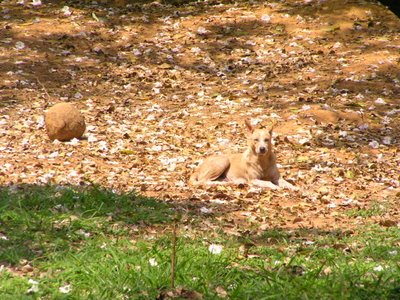
2pm, Cubbon park, Bangalore, 24th March 06.

The long flat spoon shaped beak/bill catches your attention. This bird preys in shallow water. It moves mining the area in front in semi-circles. It rakes up the matter with the bill tip and uses its wide flat bill as a sieve. Feeds on tadpoles, frogs, molluscs, insects & vegetable matter. Mmmm, interesting menu card.


Both sexes look alike. This guy stood on one feet for a long time.

Characteristics
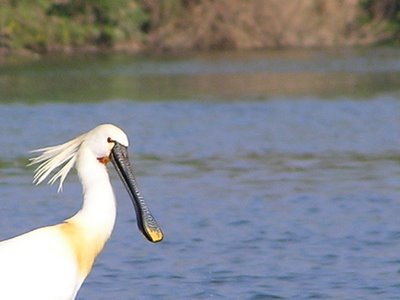
The calls are low grunt and clattering of the mandibles.
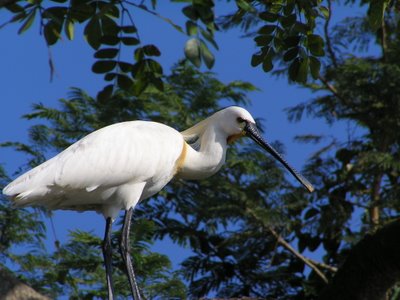
Found throughout the Indian sub-continent. Nests July to Nov (later in South India). The eggs are 4, dull white, spotted and blotched with deep red.
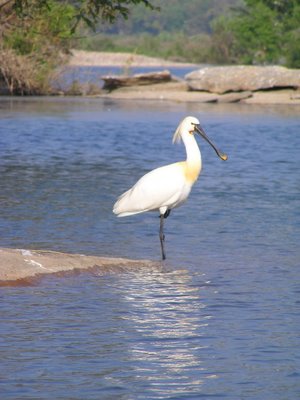
All snaps at Ranganthittu bird sanctuary, Dec 31st 2005.

The first set of birds that greeted us, as we took the boat ride at Ranganthittu on Dec 31st '05. Apparently, the smallest stork found in India. Sexes alike.

Observe the gap between the beaks - openbill - thats the identifying characterisitic
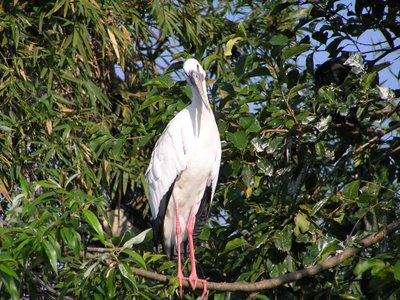
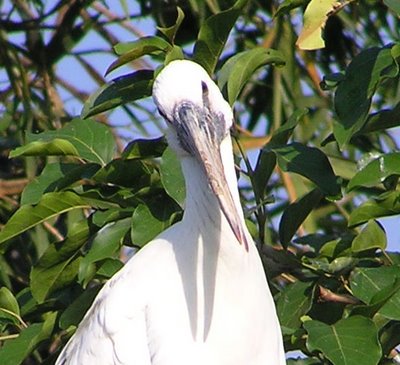
Around 80cm high, seen all over the Indian subcontinent (includes Pak, Bang, Lanka, & Burma). White or greyish white with black in the wings.
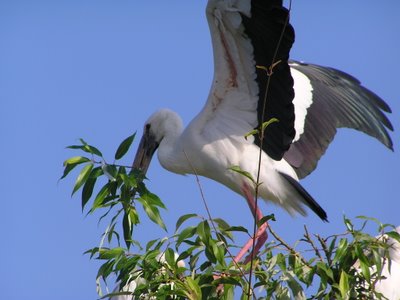 Breeding season is Nov to March in south India, and July to Sep in north India. Breeds in colonies, as seen here, along with cormorants, egrets, painted storks etc.
Breeding season is Nov to March in south India, and July to Sep in north India. Breeds in colonies, as seen here, along with cormorants, egrets, painted storks etc.
 Infact, Ranganthittu has lotz of very small islands. And, one such housed all these birds. They seemed oblivious to our proximity. It was exciting, getting so close to birds & crocodiles.
Infact, Ranganthittu has lotz of very small islands. And, one such housed all these birds. They seemed oblivious to our proximity. It was exciting, getting so close to birds & crocodiles.

The blackness at the base of the beaks seems to be another characteristic.
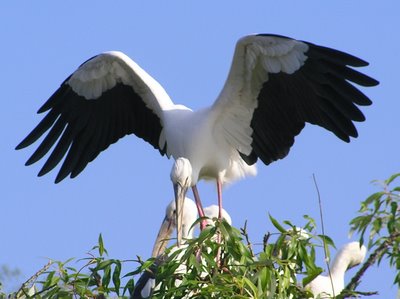 Why the gap between the beaks ? Salim Ali's suggests that this is an adaptation for grasping large fresh water snails. Voice apparatus doesn't exist in the stork family, hence more of the beak chattering and some moaning sounds are heard. Strong flight with neck & legs stretched - would be a lovely sight - Domestic duties shared by both sexes. Eggs: 2-4. Food regurgitated by parent into the nest and eaten franatically by the nestling.
Why the gap between the beaks ? Salim Ali's suggests that this is an adaptation for grasping large fresh water snails. Voice apparatus doesn't exist in the stork family, hence more of the beak chattering and some moaning sounds are heard. Strong flight with neck & legs stretched - would be a lovely sight - Domestic duties shared by both sexes. Eggs: 2-4. Food regurgitated by parent into the nest and eaten franatically by the nestling.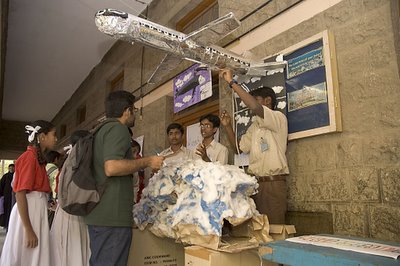 Disha is a workshop and an exhibition of science experiments for high-school children, predominantly from Govt. schools. An annual event for the last 3 years, initiated and pursued by the volunteers of Friends of Children and sponsored by Synopsys India.
Disha is a workshop and an exhibition of science experiments for high-school children, predominantly from Govt. schools. An annual event for the last 3 years, initiated and pursued by the volunteers of Friends of Children and sponsored by Synopsys India.

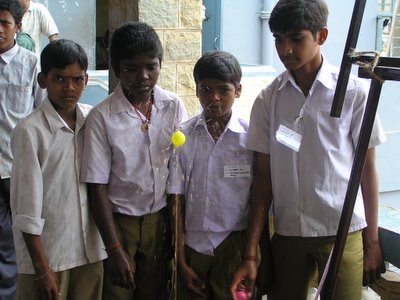
 The idea was to encourage science at govt. schools. To get the students & teachers involved. So, we decided on a workshop for the students by a professional, soon followed by an exhibition of science projects done by the students.
The idea was to encourage science at govt. schools. To get the students & teachers involved. So, we decided on a workshop for the students by a professional, soon followed by an exhibition of science projects done by the students.



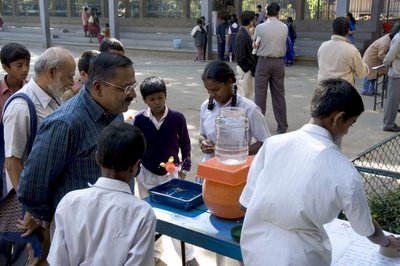


Mr. Hari Paramesharan of Dynam has been conducting the workshop for us. Very lively, every student gets a kit. Lotz of experiments are conducted over the day. And, science is introduced/illustrated in a simple, thought-provoking way. Mr. Hari leads the way, explaining, asking, & demonstrating it. And, the students find it very interesting.

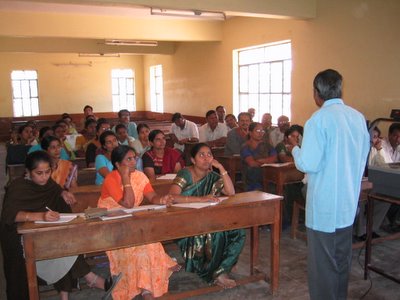
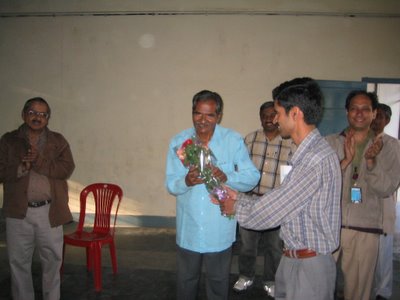
Usually, a science teacher accompanies the students. And, this year, we wanted to have a workshop exclusively for them too. In came Mr. Balluragi, a retired college lecturer/reader from Dharwad. He is known for popularising science amongst schools, has authored a few books, and is known for his simple experiments, explanations & low cost science kits. It was such a privilege to have him with us. Volunteers, who witnessed his workshop were bowled, and the teachers impressed. Ravi thanking Shri Balluragi.
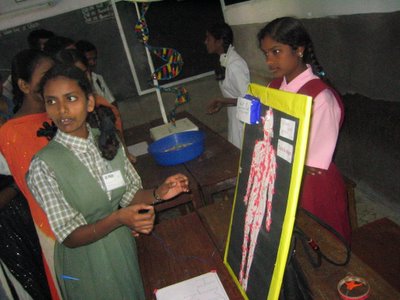
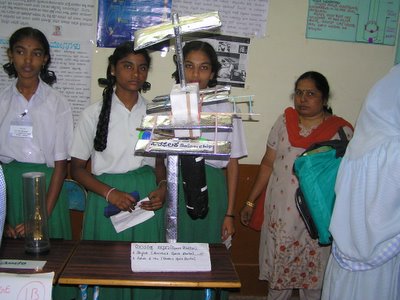
Disha 2003: 12 schools; 7 govt+5 aided; 40 projects; 80 students; 14 teachers
Disha 2004: 35 schools; 17 govt+18 aided; 75 projects; 154 students; 38 teachers
Disha 2005: 31 schools; 27 govt+ 5 aided; 31 projects; 67 students; 31 teachers

And....in 2003 & 2004, the events happened at St. Theresa School, Chamrajpet. This year, we moved it to St. Josephs Indian High School.
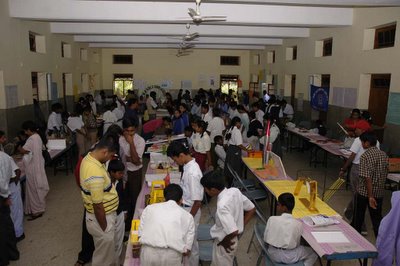 Organising an event like this is a huge challenge. Visiting schools, talking to the head-master, science teacher, etc. Getting their confirmations. Then the workshop happens. Usually, we have had problems like unconfirmed schools dropping in, throwing the planning out of gear. Its fun, and very challenging.
Organising an event like this is a huge challenge. Visiting schools, talking to the head-master, science teacher, etc. Getting their confirmations. Then the workshop happens. Usually, we have had problems like unconfirmed schools dropping in, throwing the planning out of gear. Its fun, and very challenging.

And then the exhibition day, which is typically a fortnight after the workshop. The teams are re-embursed up to 500rs for the project. The students arrive with their projects, set up stalls, start explaining, crowds pour in, mostly students from host & neighbouring schools.




Judges. Yes, we have had some very fine judges, some of them from Synopsys, and the rest mostly with IISc connections. The judges go meet the teams, and then arrive at a decision. Here, the judges being introduced to the students and then they meet the students, and finally they are discussing.
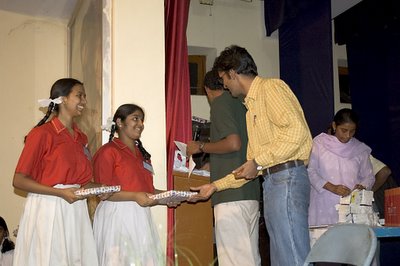
And, finally, certificates for all, and prizes for the first few are given away. Apart from the first three prize winning trophies, we have had other sponsorers pitching in with gifts, from books to NIIT courses. Bhanu Kiran - the spirit behind FoCh - giving away prizes.

Yes, apart from Science experiments, this event has had an equally important goal for us. Passing the message to students that, if you are interested in studies and are unable to continue it for financial reasons, we are there to help you out. The Friends of Children gang has been sponsoring college education for quite sometime now. An informal group of volunteers, we sponsor their education and mentor them on weekends. Mentoring/academic doubt clearance happens at St. Theresa school, Chamrajpet.
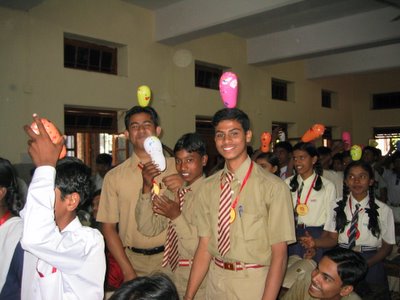

Another issue of concern is rationalism. Science should imply rationalism. Unfortunately, in our country, Science is just another subject. A curious mind, understanding the science behind, can all happen. But soon, we start having a whole lot of superstitions in the name of personal faith & tradition. Especially with impressionable minds and coming from under-previleged societies, it becomes necessary to talk 'bout rationalism, to talk 'bout the science behind 'miracles'. A gang that has worked hard towards pushing rationalism in our society has been the Breakthrough Science Society and herz a news article on them. For us, they have been conducting 'miracle bursting' programmes: expose the 'miracles' performed by false swamies. Hope to involve such groups in Disha.
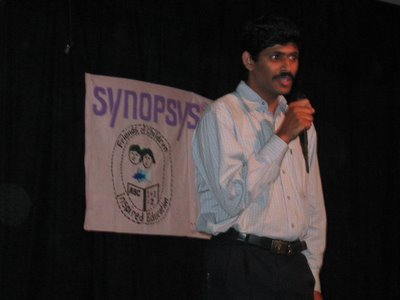
Yes, Disha for us has been taking the excitment of science to govt. school children and teachers. Telling the children that higher education is possible. And, someday hope to talk 'bout rationalism as well. Here, Shrikanth talks 'bout the options available after 10th std.
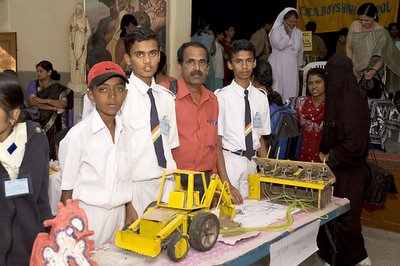
Disha also means event management of the highest order. The number of schools, teams, children, teachers, judges, prizes, certificates, VIP's. Its a challenge. We have reached out to less than 30 govt. high schools in Bangalore. There are hundred's of govt high schools in Bangalore alone. Can we reach out to them ? And, what about the rural schools, can we think on those lines, reaching out to smaller towns, away from Bangalore. Can we replicate this model elsewhere ? Thats the challenge. Money is not an issue, but dynamic volunteers to make it happen.
Special thanks to Synopsys India for sponsoring the event all these years. And, if you are interested in volunteering for Disha 2006 (Nov-Dec) or with Friends of Children, dash a mail to Ravi.
Snaps from various sources cover Disha 03, 04 & 05.

A flower with a strange name and looks. It was again on the Kumar-Parvatha route I saw this flower. Western ghats, May 2005. The yellow & red flowers, and white bracts (??) stuck me. I wondered 'bout it for a long time and still do. Whats the significance ? of having a red-colored, yellow-colored and white leaf like bracts.

Yes, distributed in western ghats. Flowers during mid-monsoon & early winter; but the white bracts are seen all thru the year.
Flowers are eaten as pot herb. Leaves & fruit in traditional medicine. And is the food of Commander butterfly.
Source: BNHS book ' Common Wild Indian Flowers - Isaac Kehimkar '
 The plant is found near hills & forests along the streams. Notice the long, wide & glossy leaves.
The plant is found near hills & forests along the streams. Notice the long, wide & glossy leaves.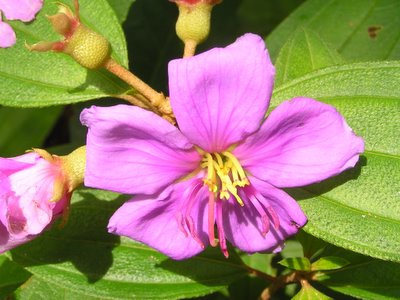
Flowers may be pink-magenta, purple or white. And have alternate yellow & reddish-purple anthers.


Yes, these insects caught my attention. The bee flew-away, while the cricket stay put despite all my attention. Infact, it is said (in the book) that this flower feeds the atlas moth & grey count butterfly.


Note the yellow streak of the cricket, matches so well with that of the anthers.
Yeah! read somewhere that this plant is a potential source for the extraction of natural colourants.
All these, Thanks to Isaac Kehimkar for writing 'Common Indian Wild Flowers' and to BNHS.